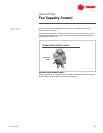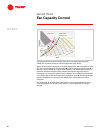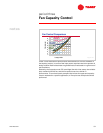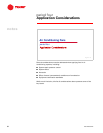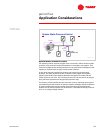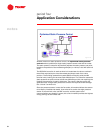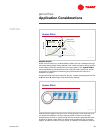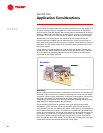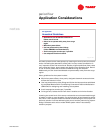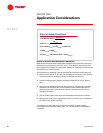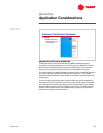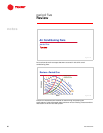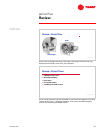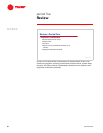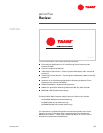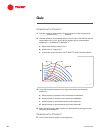
TRG-TRC013-EN 57
period four
Application Considerations
notes
An HVAC system can be made quieter by reducing the source (fan) sound level
and/or increasing the attenuation of the path. In many cases, fan selection is
very important to the final sound level. Smaller, higher-speed fans often create
more noise then larger, lower-speed, and slightly more expensive fans. Sound
is one of the key issues that must be considered during fan selection.
Additionally, the fan should be selected to operate safely away from the surge
region.
Other guidelines for the system include:
■ Minimize system effects, since poorly designed ductwork causes turbulent
airflow that results in noise
■ Use low-pressure-drop duct fittings and follow the best practices published
by the Sheet Metal and Air Conditioning Contractors’ National Association
(SMACNA) for designing and installing duct systems
■ Avoid rectangular sound traps, if possible
■ On larger fans, isolate the fan from the air handler to minimize vibration
Lowering the sound level of the source reduces the sound transmitted through
all paths. In order to treat the paths, first analyze them all and determine which
are critical. Then compare different methods of attenuating the critical path. An
optimum solution involves addressing the source and the paths during system
design. Software tools exist to model HVAC system noise in acoustically-
sensitive projects.
fan application
Acoustical Guidelines
▲ Optimize fan and air-handler selection for
lowest overall sound
▲ Select fan to operate safely away from surge
region
▲ Minimize system effects
▲ Use low-pressure-drop duct fittings
(follow SMACNA recommendations)
▲ Avoid rectangular sound traps, if possible
▲ Use adequate vibration isolation
Figure 82



